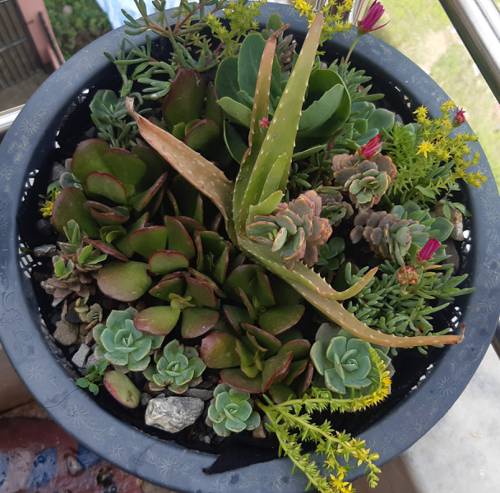
FAQ About Indoor Plant Sensory Integration

What is indoor plant sensory integration?
Indoor plant sensory integration refers to the use of plants within indoor spaces to create environments that engage multiple senses. This approach focuses on enhancing aspects like texture, color, sound, and scent to provide a more holistic sensory experience, contributing to the well-being and mindfulness of individuals within those spaces.

How do indoor plants contribute to a multisensory environment?
Indoor plants contribute to a multisensory environment through various elements like texture, color, sound, and scent. The greenery and varied forms add visual interest, while the different textures of leaves and stems offer tactile stimulation. Some plants can gently rustle in the breeze, adding soft sounds, while others release pleasant scents that can impact mood and cognition.

What types of indoor plants are best for sensory integration?
The best indoor plants for sensory integration are those that appeal to multiple senses. Examples include lavender for scent, peace lily for visual appeal, and plants like lamb's ear for tactile texture. The choice depends on the desired sensory effect and the indoor environment.

Can indoor plants improve mood and mental health?
Yes, indoor plants are known to improve mood and mental health by reducing stress, enhancing relaxation, and boosting overall well-being. Their presence can foster a calming environment and promote a sense of connection to nature, which is beneficial for mental health.

How does the texture of plants enhance sensory experiences indoors?
The texture of plants can enhance sensory experiences by providing a variety of tactile experiences. Plants such as ferns, succulents, or velvet-like leaves offer distinct textures that can be soothing and engaging to touch, adding a tactile dimension to the sensory environment.

What role do plant colors play in sensory integration?
Plant colors play a significant role in sensory integration by influencing emotions and perceptions. Green is associated with relaxation and calmness, while brightly colored flowers can stimulate creativity and energy. The strategic use of plant colors can help set the mood and tone of a space.

Can indoor plants produce sound, and how does this affect sensory experience?
Yes, certain indoor plants can produce sound. The rustling of leaves when plants sway in response to air currents creates natural sounds that can enhance relaxation and reduce stress levels. Such sounds provide a gentle reminder of nature's presence indoors.

Which indoor plants are known for their scent and how do they impact the environment?
Indoor plants like jasmine, gardenia, and lavender are renowned for their pleasant scents. These scents can positively impact the environment by alleviating stress, enhancing mood, and promoting relaxation, thereby contributing to a calming and welcoming atmosphere.

How can indoor plants aid in sensory therapy?
Indoor plants can aid in sensory therapy by offering a range of stimuli that engage the senses. This can be particularly beneficial for individuals with sensory processing issues, as plants provide a diverse array of textures, smells, and sights that can be soothing and therapeutic.

What is the connection between indoor plants and mindfulness?
Indoor plants are closely connected with mindfulness practices as they encourage individuals to focus on the present moment by observing plant growth, feeling the textures, and enjoying their natural beauty. This engagement helps in reducing stress and promoting mental clarity and wellbeing.

Are there any indoor plants that are harmful or irritating to the senses?
Yes, some indoor plants can be harmful or irritating to individuals with sensitivities. Plants like philodendron or dieffenbachia may cause skin irritation or allergic reactions in some people. It's important to choose plants considering any specific allergies or sensitivities.

How does the scent of indoor plants influence brain function?
The scent of indoor plants can significantly influence brain function by impacting mood, stress levels, and cognitive performance. Aromas like lavender are known to decrease anxiety and improve sleep quality, while others like rosemary can invigorate and enhance focus.

How can you incorporate indoor plants into a sensory-friendly room?
To incorporate indoor plants into a sensory-friendly room, choose plants with a variety of textures, colors, and scents that align with the desired sensory goals. Consider the placement for visual harmony and ensure they are easy to access for interaction, amplifying their sensory benefits.

What are the maintenance considerations for using indoor plants for sensory integration?
Maintenance considerations include selecting low-maintenance plants that suit the indoor environment, ensuring adequate light, and regular watering while avoiding overwatering. Paying attention to plant health and grooming is essential to sustain their sensory contributions over time.

Can indoor plants be used to create a sensory escape in urban environments?
Yes, indoor plants can be particularly effective in creating a sensory escape in urban environments by providing a natural, calming presence amidst the hustle and bustle. They offer a visual and olfactory respite, transforming confined spaces into peaceful, rejuvenating areas.

What scientific studies support the use of indoor plants in sensory integration?
Numerous studies support the benefits of indoor plants, highlighting their role in stress reduction, air purification, and improving concentration. Research evidences how the presence of plants nurture mental health and enhance sensory experiences in various indoor environments.

How do the different textures of indoor plants appeal to tactile senses?
Different textures of indoor plants appeal to tactile senses by offering a range of surfaces to explore, from the smoothness of certain leaves to the more rugged or fuzzy surfaces of others. This variety can be comforting and provide a physical connection to the natural world.

Are there specific arrangements of indoor plants best for sensory integration?
Specific arrangements tailored to the room's design and sensory goals can enhance the effect of plant integration. Use grouping to maximize visual impact, vary heights and textures, and place fragrant plants near seating areas to engage the senses optimally.

How can indoor plant sensory integration enhance workplace environments?
Integrating indoor plants in workplace environments can reduce stress, improve air quality, enhance productivity, and boost employee morale. The multi-sensory engagement offered by plants creates a more pleasant and stimulating workplace, fostering creativity and focus.

What are some challenges in using indoor plants for sensory integration?
Challenges may include selecting the right plants that are compatible with indoor conditions, managing allergies, ensuring regular maintenance, and achieving the right balance of sensory stimuli without overwhelming the environment.
